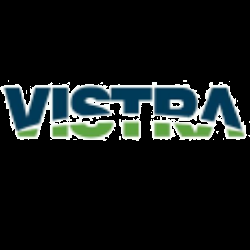Overall, Vistra Corp. demonstrates strong business quality through its solid financial performance and strategic growth initiatives. However, regulatory uncertainties pose challenges that could impact future opportunities. The company is well-positioned to benefit from anticipated load growth and its commitment to zero-carbon projects, although it must navigate ongoing regulatory complexities.
Analysis Date: February 27, 2025
Last Updated: March 12, 2025
Trailing Twelve Months (TTM) values provide a view of the company's performance over the last year.
Graham Value Metrics
Benjamin Graham's value investing approach focuses on finding stocks with a significant margin of safety between their intrinsic value and market price.
Intrinsic Value
Estimated fair value based on Graham's formula
$161.32
Current Market Price: $96.75
IV/P Ratio: 1.67x (>1.0 indicates undervalued)
Margin of Safety
Gap between intrinsic value and market price
40.0%
Graham recommended a minimum of 20-30% margin of safety
Higher values indicate a greater potential discount to fair value
ROE: 47.78077268643307
ROA: 1.1675933280381254
Gross Profit Margin: 43.689038550859266
Net Profit Margin: 15.437761263353462
Trailing Twelve Months (TTM) values provide a view of the company's performance over the last year.
Strong Profit Margins
0.279
Operating Profit Margin
The company demonstrates high net profit margin of 21.2%, indicating effective cost management and strong profitability compared to industry standards.
High Return on Equity
With a return on equity (ROE) of 64.9%, the company shows exceptional efficiency in generating profits from its equity investments.
No profitability weaknesses identified.
About Profitability Metrics
Profitability metrics measure a company's ability to generate earnings relative to its revenue, operating costs, and other relevant metrics. Higher values generally indicate better performance.
Return on Equity (ROE)
Measures how efficiently a company uses its equity to generate profits
47.78%
10%
15%
Higher values indicate better returns for shareholders
TTM (as of 2025-04-16)
Return on Assets (ROA)
Measures how efficiently a company uses its assets to generate profits
1.17%
3%
7%
Higher values indicate better asset utilization
TTM (as of 2025-04-16)
Gross Profit Margin
Percentage of revenue retained after accounting for cost of goods sold
43.69%
20%
40%
Higher values indicate better efficiency in production
TTM (as of 2025-04-16)
Net Profit Margin
Percentage of revenue retained after accounting for all expenses
15.44%
8%
15%
Higher values indicate better overall profitability
TTM (as of 2025-04-16)
Zero Debt Levels
The debt-to-equity and debt-to-assets ratios of 0.0 indicate that the company has no debt, reflecting solid financial health and low financial risk.
Excellent Liquidity Ratios
The current ratio of 225.79 and quick ratio of 227.42 suggest that the company has more than enough short-term assets to cover its liabilities, which is an excellent sign of liquidity.
No financial health weaknesses identified.
About Financial Health Metrics
Financial health metrics assess a company's ability to meet its financial obligations and its overall financial stability.
Debt to Equity Ratio
Total debt divided by total equity
3.11x
1.0x
2.0x
Lower values indicate less financial leverage and risk
Less than 1.0 is conservative, 1.0-2.0 is moderate, >2.0 indicates high risk
Q4 2024
Current Ratio
Current assets divided by current liabilities
0.96x
1.0x
2.0x
Higher values indicate better short-term liquidity
Less than 1.0 is concerning, 1.0-2.0 is adequate, greater than 2.0 is good
Q4 2024


